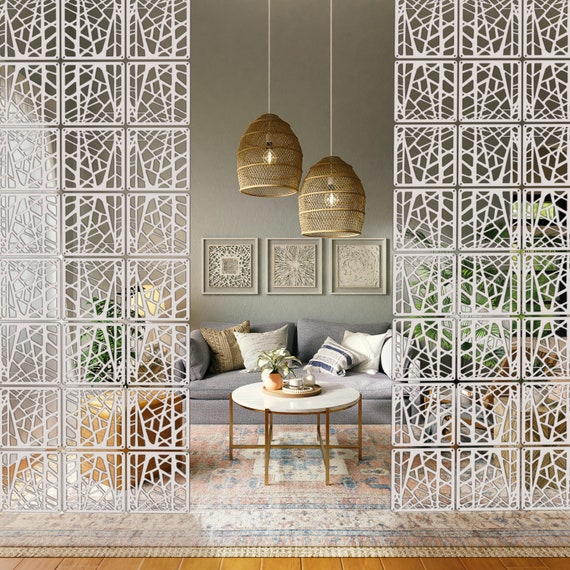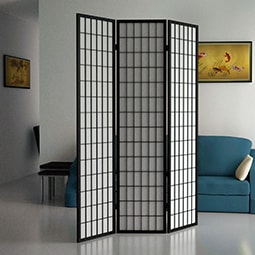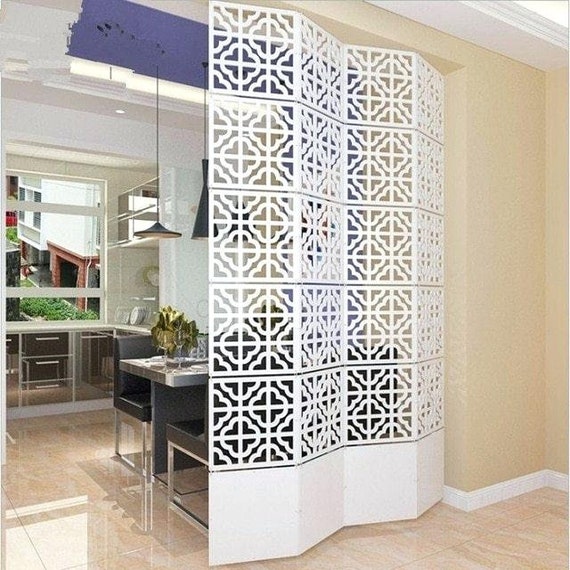Introduction to Decorative Screens and Room Dividers
In today’s open-concept living spaces, finding ways to define areas without sacrificing light and openness is crucial. Decorative screens and room dividers offer the perfect solution. Not only do they partition spaces, but they also serve as stunning décor elements that can transform any room. Based on my personal experience with interior design, utilizing these features has greatly enhanced the functionality and aesthetics of my home. In this comprehensive guide, we will explore various types of decorative screens, their benefits, and tips on how to choose the best one for your space.
What Are Decorative Screens and Room Dividers?
Decorative screens and room dividers are versatile pieces of furniture designed to separate spaces while adding style. They can be made from various materials, including wood, metal, fabric, and glass. Whether you need to create a cozy reading nook, an office area, or just section off a part of your living room, these dividers come in various designs that can cater to your needs.
Types of Decorative Screens and Room Dividers
1. Folding Screens
Folding screens are perhaps the most traditional form of room dividers. They typically consist of panels connected with hinges, allowing them to fold and collapse easily. Available in various designs, they can complement any décor style.
2. Fixed Room Dividers
Fixed room dividers are more permanent solutions that can be built into the architecture of your home. Examples include sliding doors or built-in shelves. These can create more substantial partitions but require more installation effort.

3. Decorative Panels
Decorative panels can be used to create a focal point in a room or section it off. Made from materials like wood, metal, or acrylic, they often feature intricate designs or patterns.
Comparison of Different Types of Room Dividers
| Type | Flexibility | Installation | Aesthetic Appeal | Cost |
|---|---|---|---|---|
| Folding Screens | High | No | Varies | $-$$ |
| Fixed Room Dividers | Low | Yes | High | $$-$$$$ |
| Decorative Panels | Medium | Depends | High | $$-$$$ |

Benefits of Using Decorative Screens and Room Dividers
1. Space Optimization
One of the most significant benefits of room dividers is their ability to optimize space. They allow you to create designated areas within a larger room, making the space more functional.

2. Aesthetic Enhancement
Decorative screens come in various styles, colors, and designs. They can enhance the overall aesthetic of your home, adding a splash of personality and style.
3. Privacy and Noise Reduction
Screens can help reduce noise and provide a degree of privacy in shared living spaces. This is particularly beneficial in open-plan homes where sound can easily travel from one area to another.

4. Versatility
Decorative room dividers are incredibly versatile. They can easily adapt to different spaces and serve multiple purposes, from hiding clutter to creating intimate areas.
Choosing the Right Decorative Screen for Your Space

1. Consider Your Space
Assess the area where you intend to place the divider. Measure the space to ensure the divider fits well without overwhelming the room.
2. Define Purpose
Are you looking for a functional divider for privacy, or is your primary aim aesthetic enhancement? Understanding your goals will help narrow down your options.

3. Match Your Décor Style
The design of the screen should complement your existing décor. Whether your home is modern, traditional, or eclectic, choose a style that enhances your space.
4. Material Matters
The material of the screen will greatly affect its look and durability. Wood offers warmth, metal adds a modern touch, and fabric can soften the ambiance. Consider maintenance and longevity when choosing materials.
5. Budget Considerations
Decorative screens and room dividers can vary widely in price. Set a budget to help you narrow down your choices without overspending.
DIY vs. Store-Bought Room Dividers
When it comes to obtaining decorative screens, you have two primary avenues: DIY projects or purchasing ready-made dividers. Both options have their pros and cons.
DIY Room Dividers
Pros:
- Customization: You can tailor the design to your unique taste.
- Cost-Effectiveness: Often less expensive than store-bought options.
- Personal Satisfaction: There’s a rewarding feeling that comes from creating something with your own hands.
Cons:
- Time-Consuming: DIY projects can take considerable time and effort.
- Skill Level: Not all DIY projects are suitable for every skill level.
Store-Bought Room Dividers
Pros:
- Convenience: Ready-made dividers are quick and easy to set up.
- Variety: A vast selection of styles and materials is available.
Cons:
- Cost: High-quality dividers can be expensive.
- Less Personal: Store-bought options may not fully align with your vision.
Popular Decorative Screen Styles
1. Bohemian Screens
Bohemian screens often feature vibrant colors and eclectic designs, making them perfect for adding a whimsical touch to your space. They work wonderfully in a casual setting.
2. Modern Minimalist Screens
Minimalist screens focus on clean lines and neutral colors. They can be an excellent choice for contemporary homes, as they maintain the open feel while offering some definition.
3. Traditional Wooden Screens
Wooden screens provide warmth and a classic touch. They can come in ornate designs or simple finishes, making them versatile enough for almost any décor style.
Visual Inspiration
Here are some images to inspire your choice of decorative screens:
FAQs About Decorative Screens and Room Dividers
1. Can I use a decorative screen outdoors?
Yes, many decorative screens are suitable for outdoor use, especially those made from weather-resistant materials. Be sure to check the manufacturer’s specifications.
2. How do I maintain my decorative screen?
Maintenance depends on the material. For wooden screens, dust regularly and polish occasionally. Metal screens may require occasional cleaning to avoid rust, while fabric screens can often be spot-cleaned.
3. Are room dividers easy to move?
Yes, most folding screens and lightweight room dividers are designed for easy relocation. This flexibility allows you to change your space as needed.
4. Do room dividers provide complete privacy?
While room dividers can offer a degree of privacy, they may not provide complete soundproofing or visual barriers. For maximum privacy, look for taller or denser options.
Conclusion
Decorative screens and room dividers are a fantastic way to redefine your living space, enhance aesthetics, and provide functionality. Whether you opt for a DIY project or a ready-made solution, the impact of these elements can be profound. By carefully considering your space, purpose, and style, you can find the perfect divider that not only meets your needs but also elevates your home’s overall design. I hope this guide inspires you to explore the world of decorative screens and room dividers to make your home uniquely yours.